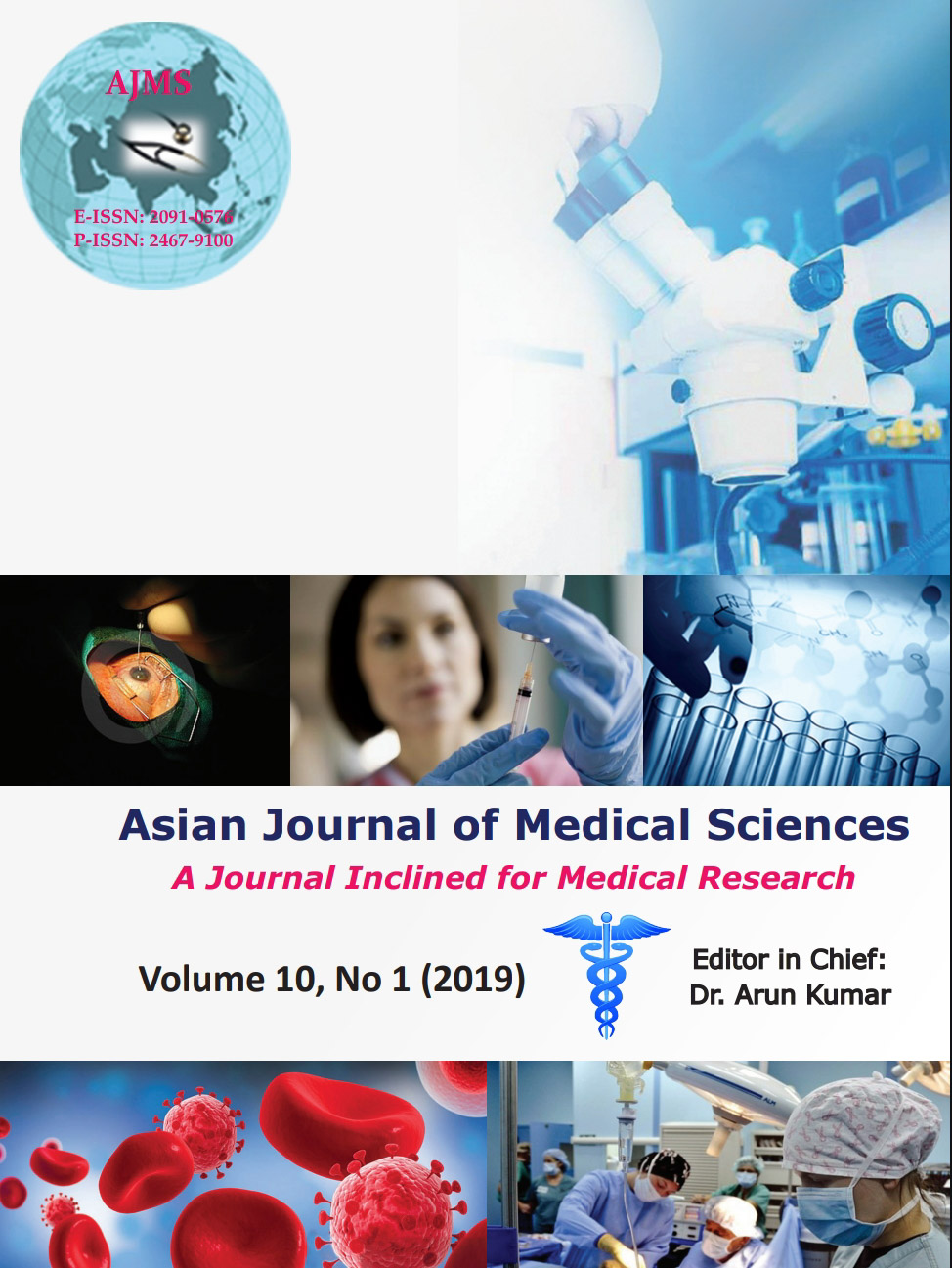Use of a shade guide to test the perception and prevalence of natural tooth colour in people of Nepal
Keywords:
Tooth colour, Shade match, Digital colorimeter, VITA easyshadeAbstract
Background: Recent advances in colour matching have been driven by the market demand for high-quality esthetic restorations. Improved shade guides, availability of shade-taking devices and research in the area of human colour vision have improved the potential of clinicians to achieve excellent colour matched restorations. A thorough understanding of appearance attributes of natural teeth is required along with these new tools to maximize shade matching results.
Aims and Objectives: The aim of the present investigation is to determine tooth shade among the people of Nepal.
Materials and Methods: In the present study, shade of cervical, middle and incisal third of the facial surface of natural maxillary central incisor was measured with digital colorimeter, VITA Easy shade Advance 4.0. It is an optical reading device that can assess the wavelengths reflected back to its sensors. Lighting in operatory does not affect the shade measurement. It is extremely accurate. The limitation of study was its small sample size.
Result: The shade obtained in the cervical third of tooth is 1M2 (37.33%), in the middle 1M1 (32.88%), and in the incisal third 2M1 (37.33%). Value 1 indicates lighter tooth colour and colour saturation is up to 2.
Conclusion: It was concluded that the most prevalent shade in cervical third was 1M2, middle third was 1M1 and incisal third was 2M1.
Downloads
Downloads
Published
How to Cite
Issue
Section
License
Authors who publish with this journal agree to the following terms:
- The journal holds copyright and publishes the work under a Creative Commons CC-BY-NC license that permits use, distribution and reprduction in any medium, provided the original work is properly cited and is not used for commercial purposes. The journal should be recognised as the original publisher of this work.
- Authors are able to enter into separate, additional contractual arrangements for the non-exclusive distribution of the journal's published version of the work (e.g., post it to an institutional repository or publish it in a book), with an acknowledgement of its initial publication in this journal.
- Authors are permitted and encouraged to post their work online (e.g., in institutional repositories or on their website) prior to and during the submission process, as it can lead to productive exchanges, as well as earlier and greater citation of published work (See The Effect of Open Access).




